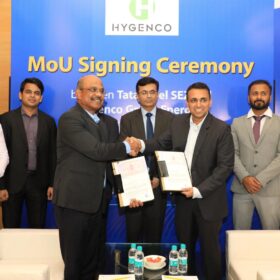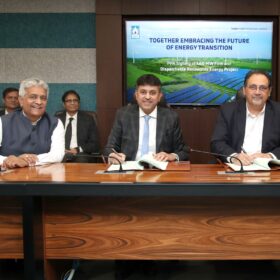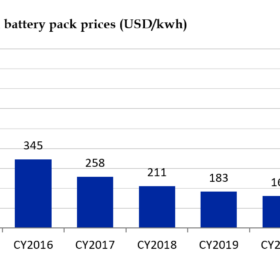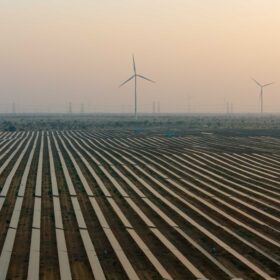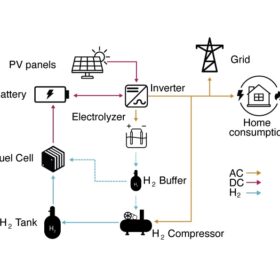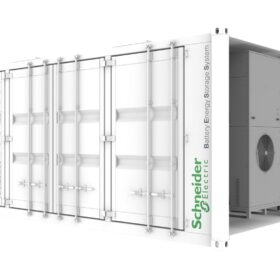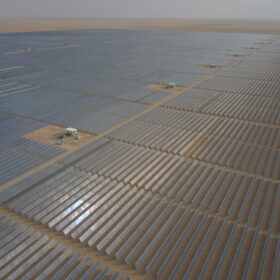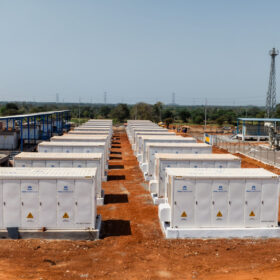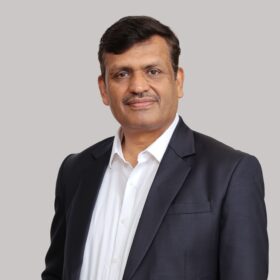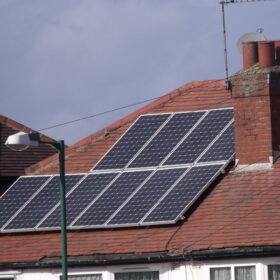The Hydrogen Stream: Hygenco to set up green hydrogen, ammonia project at Tata Steel SEZ’s Gopalpur Industrial Park
Hygenco aims to produce 1 million tonnes per annum (MTPA) of green ammonia from its plant at Tata Steel SEZ’s Gopalpur Industrial Park in Odisha. The project’s initial phase is set for commissioning by December 2026.
Tata Power secures PPA with SJVN for 460 MW renewables-plus-storage project
Tata Power Renewable Energy Ltd will develop a hybrid plant comprising solar, wind, and battery storage components to meet the 460 MW firm and dispatchable renewable power requirement.
Adani Green Energy revenue up 33% YoY to INR 7,735 crore
Adani Green Energy Ltd (AGEL) also reported its operational capacity grew 35% YoY to 10,934 MW with greenfield addition of 2,418 MW solar and 430 MW wind projects. The company’s renewable energy capacity target is now revised upwards to 50 GW by 2030.
Declining battery costs to boost adoption of battery energy storage projects: ICRA
Battery prices reached an all-time low in 2023 led by the moderation in raw material prices amid the increase in production across the value chain
India installed 15 GW of solar capacity in FY 2024: CEEW-CEF
India added 18.5 GW of renewable energy generation capacity in FY 2024, comprising 81% (15 GW) from solar (grid-scale and rooftop).
New model shows how to power homes exclusively with hydrogen, solar, batteries
Researchers in Spain has found that combining PV power generation with fuel cells and battery storage may help homes considerably reduce their levelized cost of energy. Their simulation reportedly demonstrated homes may also become completely self-sufficient.
The Hydrogen Stream: Norway to make world’s biggest hydrogen ships
Norwegian Ship Design Co. has agreed to help build what it claims will be the two largest hydrogen ships in the world, while Norwegian Hydrogen has announced plans to team up with Australia’s Provaris Energy on hydrogen export opportunities.
Schneider Electric launches new storage systems for microgrids
The France-based group said its has released two new BESSs with enclosures of 7ft and 20ft. Their power ranges from 60 kW to 500 kW.
Scientist hails commercial feasibility of Saudi Arabian hydrogen city plan
Alberto Boretti was a senior research professor at Prince Mohammad Bin Fahd University in 2021 when he first started discussing the idea of a hydrogen city in Al Khobar, Saudi Arabia. The New Zealand-based independent tells pv magazine that it is now commercially feasible, as the city’s 200 MW of energy demand would necessitate 1 GW to 1.3 GW of solar and wind capacity, 509 MW to 997 MW of electrolysis capacity, and 145,000 MWh of hydrogen storage capacity.
CATL presents EV battery with 1,000 km range
Contemporary Amperex Technology Co. (CATL) has shown its latest lithium iron phosphate (LFP) battery at an auto show in Beijing. The Chinese company says it has an energy density of 205 Wh per kg, almost 8% higher than the current state of the art for such batteries.
